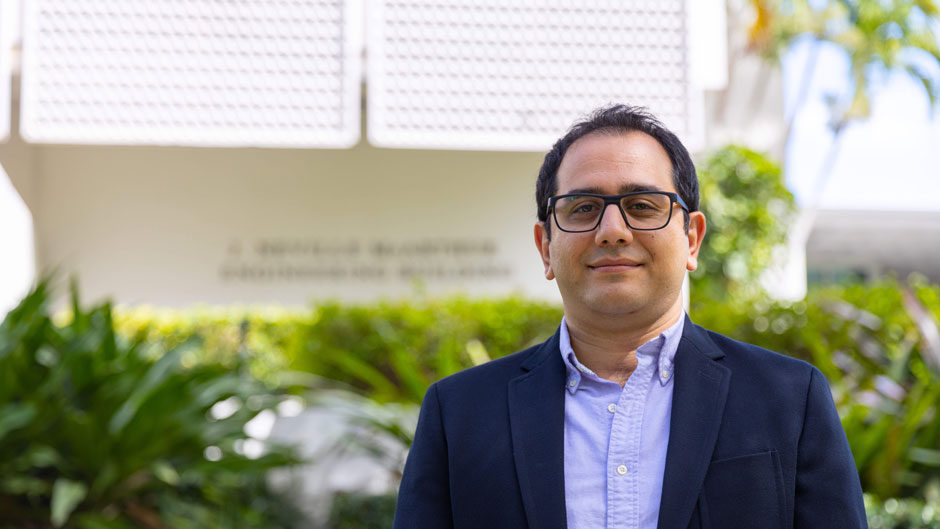A transformer blows in a heavily populated neighborhood, knocking out electricity to dozens of homes just as a blistering heat wave is about to envelop the city. Meanwhile, a few miles off the coast in the Atlantic, the hydraulic engine pump on a research vessel stops working, stranding six scientists at sea.
In both cases, repairs could be easily made. But what if there was information available that could have prevented the breakdowns entirely—data that revealed a fault within the transformer, allowing the local utility company to replace the device before it blew, and a statistical readout that told the boat maintenance crew that it was time to replace the pump?
A University of Miami College of Engineering researcher with a fascination for the field of data science and the way in which it can be used to prevent catastrophic failures is the mastermind of a method that would make such preemptive measures possible.
By analyzing sensor data gleaned from wind turbines, engines, breakers, switches, and a multitude of other smart devices, Ramin Moghaddass is developing the next generation of mathematical and computational models that would mimic the behavior of power networks over time, making accurate and real-time decisions possible.
“We need to be able to understand what’s going on with a system in the present to predict its future behavior,” said Moghaddass, an assistant professor of industrial engineering. “Take a wind turbine, for example. When it is new, it runs at optimal performance. But over time, depending on the environment and operating conditions, its overall performance changes. So if we know what’s going to happen in the future, we can make timely decisions to prevent catastrophic failures.”
And it is the data generated by that wind turbine or some other power system that is the key to Moghaddass’ predictive modeling. As the director of the Data Analytics Lab at the College of Engineering, he is developing the framework for what he calls “reliable real-time monitoring, control, and decision-making in dynamic systems.”
His research, supported by a National Science Foundation Faculty Early Career Development award, has the potential to revolutionize the renewable-power and energy-intensive industries.
With a separate grant from Florida Power & Light, Moghaddass is also conducting research that could improve the way the electrical utility industry operates.
“Millions of homes and businesses now have energy meters that send all different types of data every few minutes,” explained Moghaddass, who is also assistant director of the college’s Industrial Assessment Center. “We can analyze readings from an electrical meter that might record a fluctuation in voltage, and if we get similar behavior from all the meters in a designated area, we can quickly deduce that there’s a transformer in that area that’s faulty.”
Aided by data that augments their existing information, utility companies would be able to deploy work crews and other resources close to areas at risk for outages and, in some instances, perform maintenance to prevent power losses.
But not long ago, such data didn’t exist—at least not at the level of sophistication at which it does now. “With the advancement in sensor technology and the internet of things, we now have access to millions of raw points of data every day on different systems,” said Moghaddass.
His research is not limited to mechanical and electrical power systems. His data analytics approach can also be applied to health care to look at patient histories and demographics to determine if someone is more susceptible to certain diseases or disorders.
“And we can use data from communications networks and power grids to predict abnormal behaviors that show potential cyber attacks,” said Moghaddass.
His fascination with data continued to blossom when he was a postdoctoral student at MIT.
“I really saw the value that data can add to different types of enterprises and realized it could have a significant impact not only on companies but also humans,” said Moghaddass. “The value of any data mining approach is in its power to provide insight that can be used for decision-making, especially today. With the availability of data that’s out there, researchers can make an impact like never before.”

